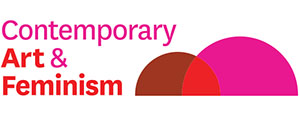The National Women’s Art Exhibition was a series of independent shows held in over 150 venues in 1995 to commemorate the 20th Anniversary of the International Women’s Year.
According to Kerr and Holder, Past Present (1999 p ix) the NWAE event united hundreds of artists, art writers, curators and art institutions in a common goal for the first time.
DAAO has been working with Contemporary Art and Feminism to collect data on this series of events so that researchers can begin to interrogate its nature and the impact it had on the Australian cultural landscape. These are just a few visualisations of the kind of data we've been collecting.
- Events226
- Participants1428
- Curators173
- Exhibited artists1255
- Indigenous artists 5.4% – 68 of 1255
CAF and FFA partnered with the DAAO or Design and Art Online (formerly Dictionary of Australian Artists) and Future Feminist Archive want to enable the next generation of feminist e-Research in Australia’s visual and design cultures.
In 2015 the DAAO and Contemporary Art & Feminism at Sydney College of the Arts developed a couple of visualisations of ‘The National Women’s Art Exhibition’ (1995), a series of independent shows held in over 200 venues in 1995-1996 to commemorate the 20th Anniversary of the International Women’s Year. The shows began with the Anniversary of Women’s Suffrage at the Art Gallery of South Australia (1994).
Researcher and art historian Eric Riddler pulled in all of the event and person data that wasn’t already present on DAAO to ensure we were working with a comprehensive subset of data. Gillian Fuller worked with CAF cohort Jo Holder, Catriona Moore and Jacqueline Milner to define a series of research questions we’d need to be able to explore through visualisation. For example, what percentage of curators/artists were indigenous Australians, can we see an increase in exhibiting activity for the artists in the 1995 events, and were some artist more represented in the events than others?
DAAO developer Alastair Weakley @ IC then played with a number of visual representations of the data that would help us address those research questions. Visualisation can offer new entry points to DAAO data. Visualisation PoCs are a reminder that enabling researchers to use DAAO data for visualisation is not just about making the data accessible or making sure the schema is ‘right’, its about providing comprehensive data.
For info on other work DAAO is doing with CAF, see the Future Feminist Archive, a gateway to Australian Feminist art.
See: https://www.daao.org.au/visualisations/

